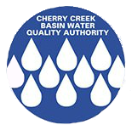PRF Activities
Pollutant Reduction Facilities (PRFs) are structural measures that include but are not limited to, stream reclamation, detention, wetlands, filtration, infiltration, and other technologies with the primary purpose of reducing pollutant concentrations entering the Reservoir and protecting the beneficial uses of the Reservoir. Like an MS4-required stormwater control measure, a PRF reduces pollutants in stormwater runoff; however, the term PRF is used because a PRF does not discriminate as to the source of the stormwater. PRFs remove pollutants from all upstream stormwater, whether regulated by an MS4 or not. In-channel PRFs effectively treat runoff from recent as well as past development.
Stormwater Controls
PRFs are stormwater controls constructed by CCBWQA. CCBWQA's PRFs include stream reclamation, shoreline stabilization, detention, wetlands, and other activities that provide water quality benefits for the Reservoir by reducing pollutants carried by stormwater from existing and future land disturbances. Similar projects constructed by local governments are also stormwater controls.
Funding of PRFs
The costs and benefits of all potential PRFs are evaluated at the conceptual level prior to design and construction. If costs and benefits appear to be reasonable, the PRF is added to the master list of Capital Improvement Projects (CIP) planned by CCBWQA. Each year CCBWQA updates its 10-year CIP plan to identify projects to fund in the coming years. Annually, the Board selects projects from the 10-year CIP for implementation, based on recommendations from the TAC and subject to available funds.
CCBWQA also works with Cherry Creek State Park to maintain PRFs in the park. As part of this effort, CCBWQA staff conduct an annual inspection of PRFs to identify routine maintenance requirements (e.g., mowing, weed control), as well as repairs and anticipated rehabilitation needs.
